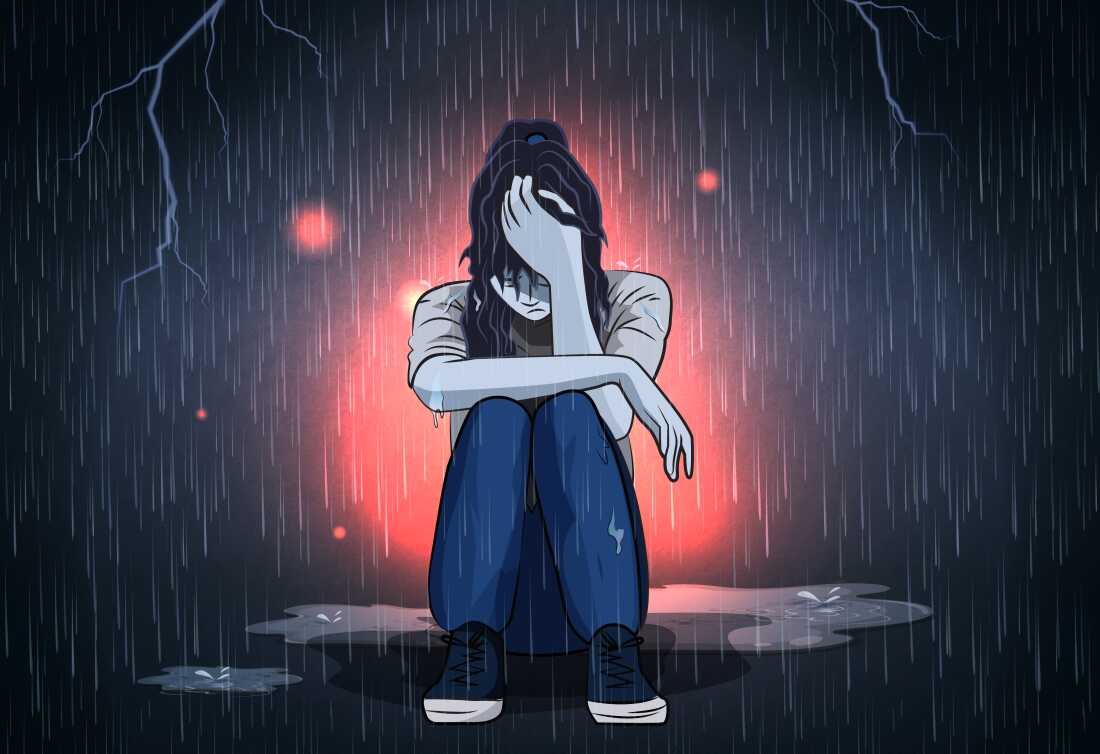
The study examined the files of more than 250,000 visits to emergency services by children on Medicaid.
Images of Cémile Bingol / Getty
hide
tilting legend
Images of Cémile Bingol / Getty
Children who go to emergency services in a mental health crisis and must be hospitalized are often stuck for days, according to a new study. This occurs in approximately one of all out of ten emergency visits for children registered in Medicaid across the country.
The most common mental health crises that led to such prolonged stays, or to boarding, were depressed disorders and suicidal thoughts and attempts, according to the Study published in Jama Health Forum.

“Thus, a child presents himself in the emergency room with a state of mental health, (and) approximately once in ten, he remains three days or more,” explains the main study author John McConnellDirector of the Center for Health Systems Efficiency at Oregon Health and Science University.
McConnell and his colleagues also found that in a handful of states, including Northern Carolina, Florida and Maine, up to 25% of mental health visits led to the embarkation of children in the emergency department for 3 to 7 days.
The results are not surprising, said Dr Jennifer HavensPresident of the Department of Psychiatry of the Child and Adolescents at the NYU Grossman School of Medicine.
“But having data like this is very important to see the effect across the country,” she adds. Havens was not involved in the study.
Emergency boarding has been an increasing problem across the country for decades, but this increase has been particularly dramatic in recent years for cases of pediatric mental health.
“While the children’s behavioral health crisis has increased, states could not follow behavioral health systems,” said Dr Rebecca MarshallAssociate professor of child and adolescent psychiatry at the OHSU, who was not involved in the new study either.

Although the study has only examined Medicaid complaints, the problem also occurs for children under private health insurance.
“We really had trouble strengthening capacity over time to increase the number of beds for hospitalized patients,” she said. “And so often, what is happening is that children will come to the hospital, they need a psychiatric bed for hospitalized patients and there is not one available. So they are waiting for a child in one of the psychiatric units to discharge and a bed becomes available.”
Many states have a shocking number of psychiatric beds for children, explains Marshall. For example, Oregon has only 38 beds for the most necessary pediatric psychiatric cases. “And then we have less than 200 residential beds, and it is a lower acuity treatment program that tends to be longer term.”
“There is a huge problem through the country with a lack of access to mental health services, both on the side (hospital and advisory outpatient,” explains Havens. Adequate ambulatory services can prevent mental health from reaching a crisis point.
Without ambulatory and adequate mental health care options, families are more likely to take their child to an emergency if the child is in mental health crisis.
But “what they find when they go to the emergency room is that there is often no care available,” said Marshall. “There is nothing immediate.”
Most ERS do not even have a child and teenager psychiatrist, says Havens, “because we have never invested in resources to have this type of service for children.”
And when children of mental health crises find themselves stuck in ERs for days, their symptoms can worsen even if there is a psychiatrist with the staff.
Most of these children aboard the emergency are trapped in “a small room,” says Marshall, sometimes a window without windows. “They are unable to leave the room. They cannot exercise. They are unable to interact with other children, which is a really important part of development. And there are often no kinds of additional therapeutic activities that you will find in a hospital unit.”
“I do not know what are the right words, but (it is) a really difficult and heartbreaking situation for families who have a child and they try to find a place to stabilize them, and they are stuck in the emergency service,” explains McConnell.

